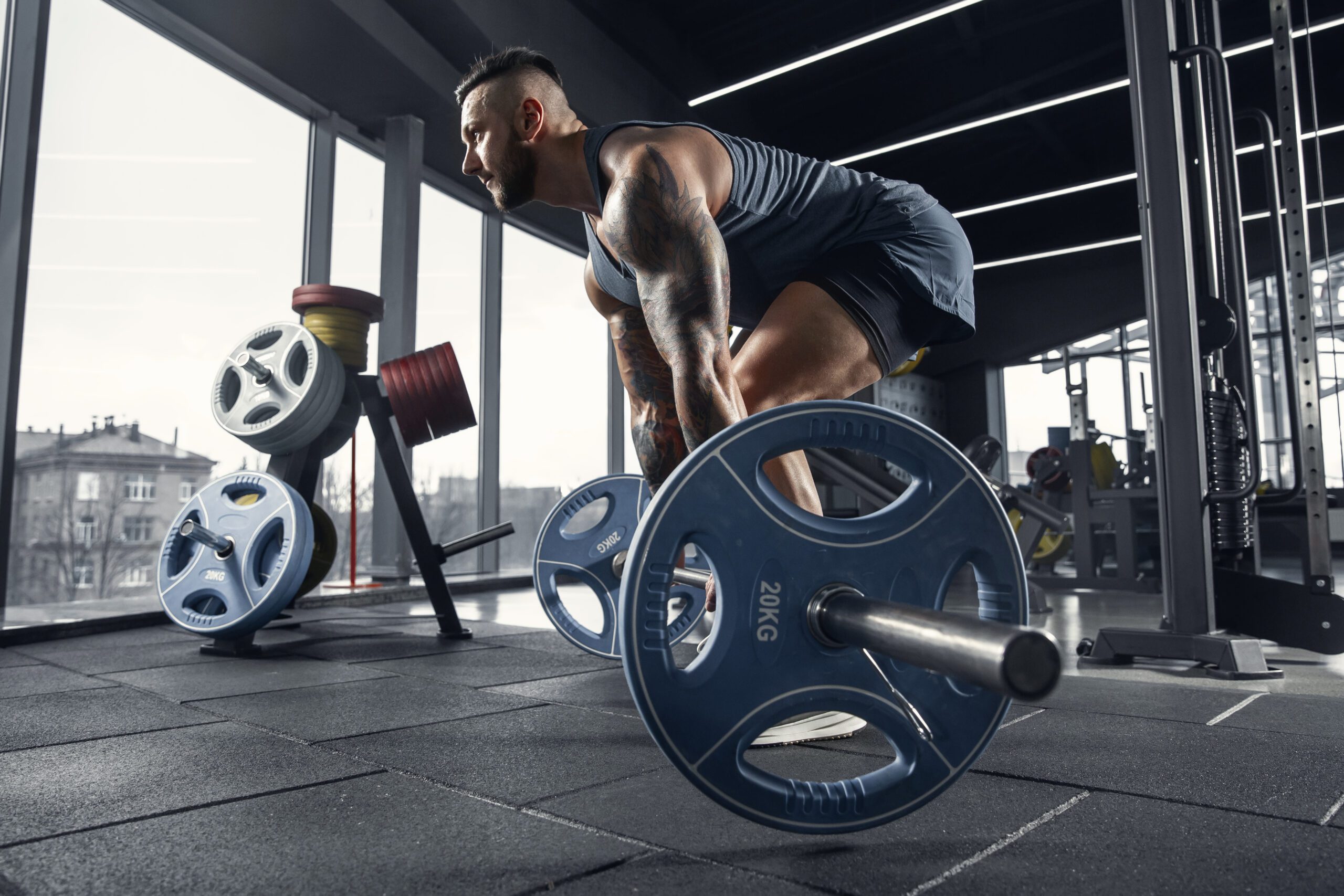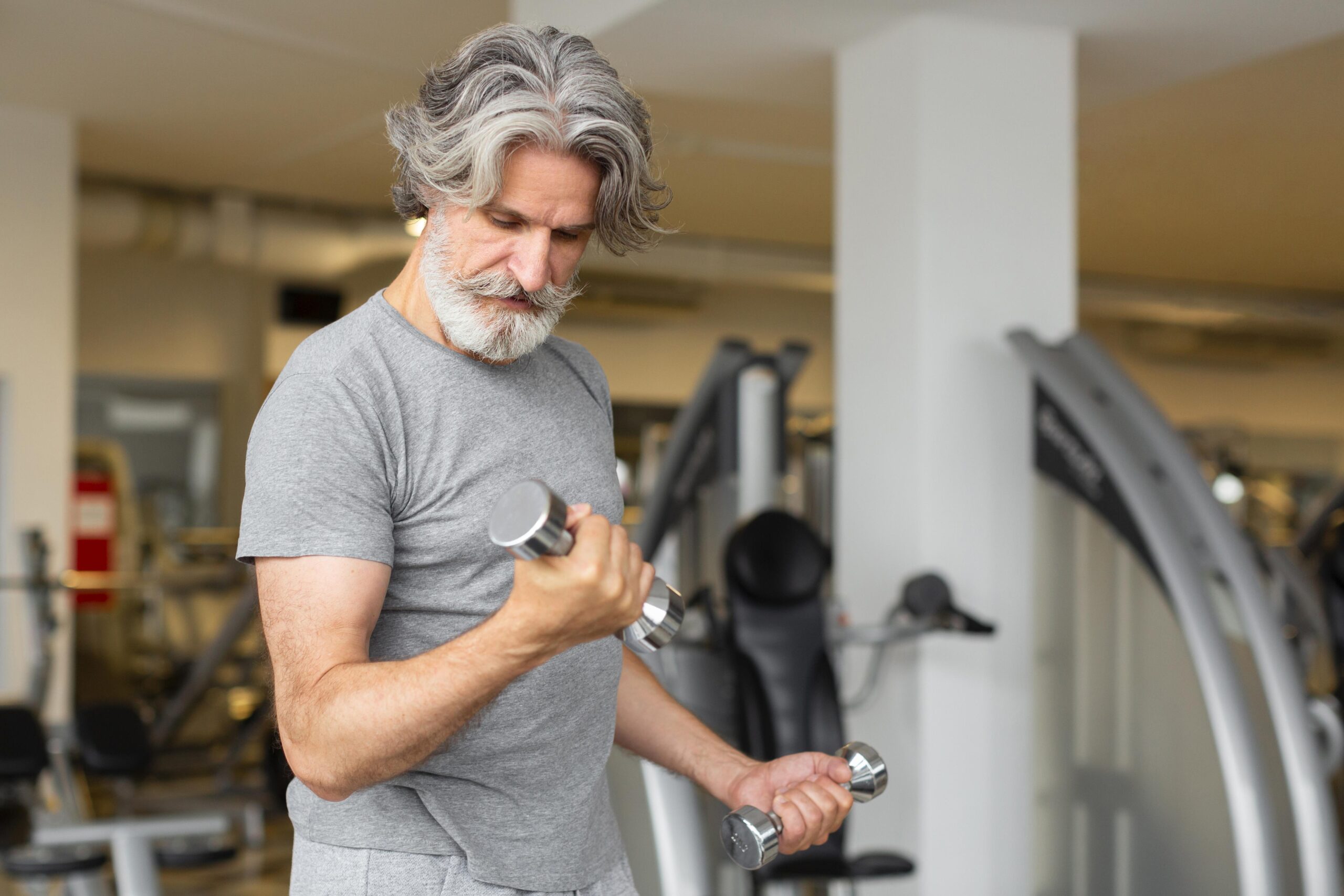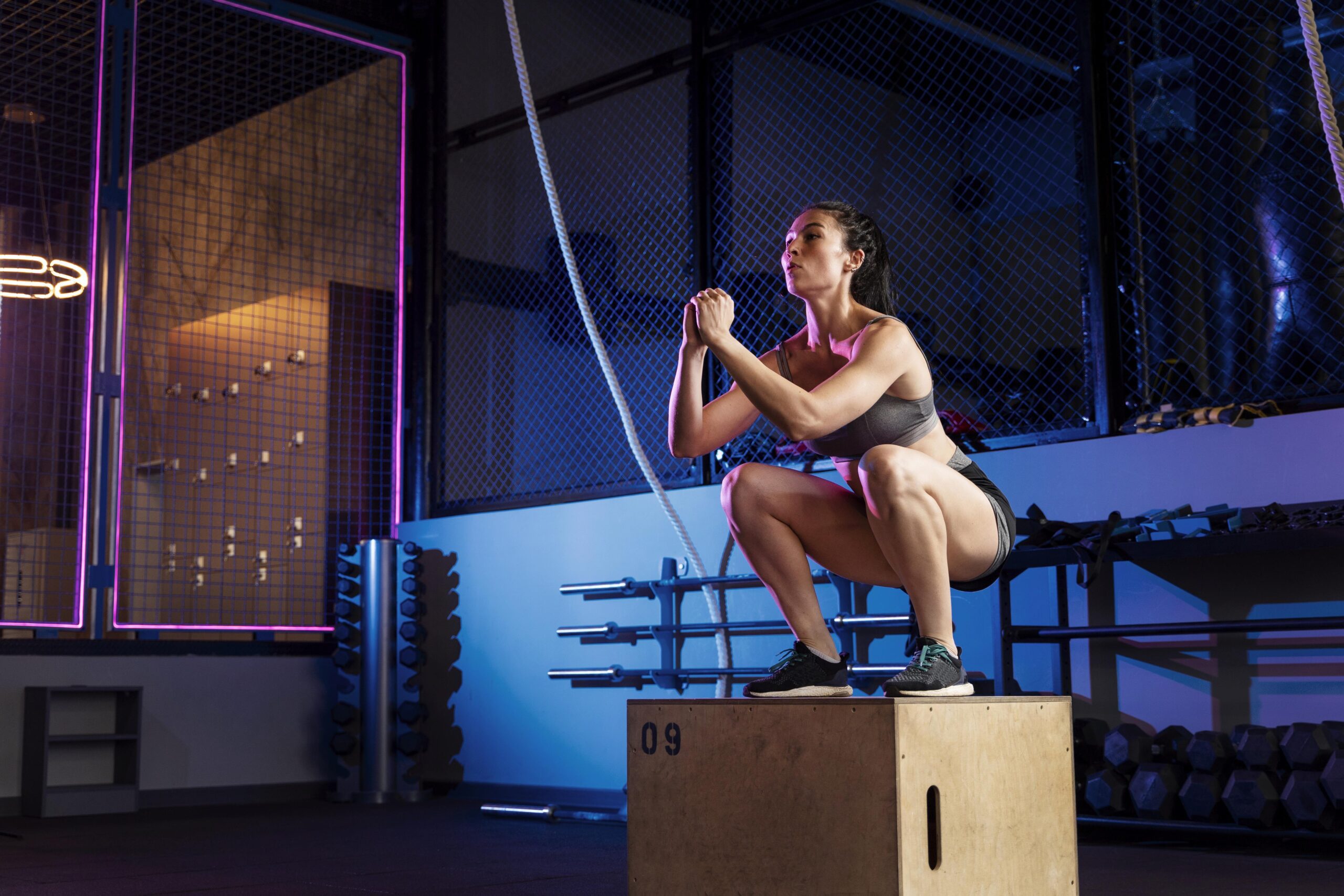Testing your muscular endurance is essential for determining and raising your level of overall fitness. You can learn a lot about your stamina, strength, and endurance by measuring how long your body can maintain muscle contractions. The importance, procedures, advantages, and applications of testing for muscular endurance will all be covered in this extensive manual. Understanding and maximising your muscular endurance may advance your fitness journey, whether you’re an athlete wanting to improve performance or a fitness enthusiast looking to push your limitations. Let’s explore the world of muscle endurance testing and learn how to reach your full physical potential.
The Significance of Muscular Endurance Testing
The ability to maintain muscle mass is essential for overall fitness. It describes your muscles’ capacity to contract repeatedly or hold a contraction for a long time without becoming fatigued. You can learn more about your physical capabilities, find areas for development, and improve your training regimens by taking a muscle endurance test. Muscular endurance testing is advantageous for both athletes and non-athletes who want to increase their functional fitness for daily activities. Having strong muscular endurance improves performance and lowers the chance of injury when lifting groceries, climbing stairs, or engaging in endurance-based sports.
Different Methods of Muscular Endurance Testing
There are several methods available to assess muscular endurance, each focusing on specific muscle groups or movements. Let’s explore some of the common testing protocols:
Isometric Endurance Tests
Isometric endurance tests are designed to assess your capacity to maintain a static muscle contraction without joint movement. These tests often involve exercises such as the plank hold, wall sit, or static squat. By performing these exercises, you can evaluate and improve your core stability, lower body endurance, and the strength of specific muscle groups. Isometric testing provides valuable insights into your muscular endurance capabilities, allowing you to identify areas for improvement and tailor your training accordingly. Incorporate isometric exercises into your workout routine to enhance overall strength, stability, and endurance for optimal fitness performance.
Dynamic Endurance Tests
Dynamic endurance tests put you through repeated motions to gauge your level of physical endurance. These examinations frequently involve movements like push-ups, sit-ups, or bodyweight squats. You can evaluate and enhance your upper body, core, and lower body endurance levels by executing these dynamic routines. Dynamic testing reveals areas where endurance can be improved and offers insightful information about your capacity to maintain effort over time. You can improve your general muscle endurance, stamina, and performance in activities that call for repetitive motions by including dynamic exercises in your training programme. You may achieve your fitness objectives and push your endurance to new heights by regularly putting yourself through dynamic testing.
Field Tests
Field tests are highly practical and convenient ways to assess muscular endurance in real-world scenarios. These tests focus on incorporating functional movements that mimic everyday activities, making them applicable to individuals of various fitness levels. Examples of field tests include the beep test, shuttle run, or step-ups on a bench. These tests provide a comprehensive evaluation of your muscular endurance by simulating movements you might encounter in sports, outdoor activities, or daily life. By performing these field tests, you can gauge your ability to sustain effort and perform repetitive tasks over extended periods. Field tests offer valuable insights into your overall muscular endurance and help tailor your training to improve performance in real-world situations.
Specialized Equipment
When it comes to assessing muscular endurance, certain equipment can provide accurate and reliable measurements. Resistance machines, weights, or fitness apparatus are commonly used to gauge endurance capacity and force production. These specialized tests enable precise tracking of your muscular endurance levels by providing controlled resistance and load. By using these equipment-based tests, you can measure your ability to sustain muscular contractions over time and determine the point of fatigue. These assessments offer valuable insights into your endurance capacity, helping you identify areas for improvement and tailor your training program accordingly. Incorporating equipment-based tests into your routine ensures accurate and targeted evaluation of your muscular endurance progress.
Popular Muscular Endurance Testing Protocols
To assess and track your muscular endurance effectively, various testing protocols have been developed. Let’s explore some widely used protocols:
Push-Up Test
The push-up test is a widely used assessment that focuses on evaluating upper body endurance and core strength. To perform this test, you need to execute as many push-ups as possible while maintaining proper form and achieving a full range of motion. The push-up test serves as an excellent indicator of your endurance in the chest, shoulder, and triceps muscles. By pushing your body weight against gravity repeatedly, you challenge and assess the capacity of these muscle groups to sustain contractions over time. The results of this test can provide valuable insights into the effectiveness of your upper body training and highlight areas where improvement may be needed.
Plank Test
The plank test is a fundamental assessment that focuses on evaluating core stability and muscular endurance. To perform this test, assume a plank position by supporting your body on your forearms and toes while maintaining proper alignment from head to toe. Engage your core muscles throughout the exercise. The objective is to hold the plank position for as long as possible, challenging the endurance of your abdominal muscles, lower back, and shoulders. This test not only targets the key muscles responsible for core stability but also provides valuable information about your muscular endurance capabilities. By measuring your ability to sustain the plank position, you can gauge the effectiveness of your core training and identify areas for improvement.
Wall Sit Test
The wall sit test is a reliable measure of lower body endurance and quadriceps strength. To perform this test, find a clear wall and assume a seated position with your back against the wall and your knees bent at a 90-degree angle. Your feet should be shoulder-width apart, and your thighs parallel to the ground. Hold this position for as long as possible without any breaks or support. The wall sit test specifically targets your quadriceps muscles and puts significant demand on your lower body endurance. By testing your ability to sustain the wall sit position, you can assess the strength and endurance of your thigh muscles, identify any imbalances or weaknesses, and track your progress over time.
Step-Up Test
The step-up test is a valuable assessment of lower body endurance and cardiovascular fitness. To perform this test, you need a stable platform or step. Step up onto the platform with one foot, followed by the other, and then step down in a controlled manner. Repeat this movement rhythmically for a set duration, maintaining a steady pace. The step-up test primarily targets your leg muscles, including your quadriceps, hamstrings, and glutes, while also challenging your cardiovascular system. By incorporating step-ups into your fitness routine, you can enhance lower body stamina, improve muscular endurance, and boost overall cardiovascular fitness. This test allows you to monitor your progress over time and tailor your training to achieve your endurance and fitness goals.
Beep Test
The beep test is a popular and effective method to evaluate aerobic fitness and endurance. It involves running back and forth between two points, timed to auditory cues, typically in the form of beeps. As the test progresses, the time between beeps decreases, requiring you to cover the distance at a faster pace. This progressive increase in intensity places greater demands on your cardiovascular system, pushing your aerobic capacity and endurance to the limit. The beep test is widely used in various sports and fitness settings to assess an individual’s cardiovascular fitness and endurance level. By participating in the beep test regularly, you can track your progress, set goals, and improve your aerobic performance over time. It is an excellent tool for enhancing endurance and achieving optimal fitness levels.

Benefits and Applications of Muscular Endurance Testing
Muscular endurance testing offers numerous benefits and applications in various fitness contexts:
Identifying Strengths and Weaknesses:
By assessing and evaluating your muscular endurance, you gain valuable insights into the strength and stamina of specific muscle groups. This knowledge enables you to identify areas that may require additional focus and attention in your training regimen. By pinpointing weaker muscle groups, you can design targeted exercises and training programs to improve their endurance and overall strength. Whether it’s enhancing core stability, increasing lower body endurance, or improving upper body stamina, tailoring your workouts to address specific needs can result in balanced muscular development and enhanced performance. By dedicating time and effort to improving the endurance of weaker areas, you can achieve a well-rounded physique and functional strength that supports you in various activities and sports. Remember, a balanced and harmonious approach to training yields the best results and helps you reach your fitness goals more effectively.
Monitoring Progress:
By incorporating regular physical endurance tests into your fitness routine, you can effectively monitor your progress over time. These tests serve as valuable benchmarks to evaluate the success of your training interventions and determine the effectiveness of your fitness program. By comparing your results from different testing sessions, you can gauge improvements in muscular endurance, cardiovascular fitness, and overall performance. This feedback allows you to make necessary adjustments to your training approach, fine-tuning your workouts to maximize your performance potential. Whether it’s increasing the number of repetitions, reducing the time taken to complete a specific test, or improving your overall endurance levels, monitoring your advancements provides tangible evidence of your hard work and dedication. It empowers you to set new goals, push your boundaries, and continually strive for better results. Embrace the feedback from endurance testing as a powerful tool for optimizing your training regimen and achieving peak performance.
Tailoring Exercise Routines:
Understanding your muscular endurance profile is essential for designing effective exercise routines that target specific muscle groups. By assessing which areas may have lower endurance levels, you can strategically incorporate exercises that challenge and improve muscle stamina. This targeted approach not only enhances your overall performance but also helps prevent muscle imbalances. By consistently engaging in endurance-focused exercises, such as high-repetition sets or long-duration activities, you gradually build the endurance capacity of your muscles. This leads to increased stamina, improved muscular efficiency, and the ability to sustain prolonged physical activities. Whether you’re an athlete looking to enhance sports performance or simply aiming to improve your everyday activities, prioritizing muscular endurance training can have significant benefits. It ensures balanced muscle development, reduces the risk of injuries, and enhances your ability to meet the physical demands of your chosen activities.

Enhancing Endurance-Based Activities:
Muscular endurance testing plays a crucial role in enhancing performance and extending your endurance capacity, regardless of the physical activities you engage in. Whether you participate in endurance sports such as running, swimming, or cycling, or enjoy hobbies that require persistent effort like hiking or dancing, improving muscular endurance can significantly impact your performance.
By conducting muscular endurance tests, you can identify your strengths and areas that need improvement. This knowledge allows you to design targeted training programs that focus on specific muscle groups and energy systems required for your chosen activities. Through consistent training and progressively challenging your endurance limits, you can increase your ability to sustain prolonged efforts and overcome fatigue.
For endurance sports, muscular endurance testing enables you to assess your ability to maintain a steady pace and endure for extended durations. It helps you identify your anaerobic threshold, allowing you to train at the appropriate intensity and optimize your energy utilization during races or competitions.
Even in non-competitive activities, such as hiking or dancing, muscular endurance testing helps you gauge your capacity to endure prolonged periods of physical exertion. It allows you to assess your ability to maintain proper form and technique, preventing injuries and ensuring an enjoyable experience.
By incorporating specific exercises and training techniques that target the muscles involved in your chosen activities, you can enhance your muscular endurance. High-repetition sets, interval training, and progressive overload are effective methods to improve endurance capacity and prolong the time until fatigue sets in.
Ultimately, muscular endurance testing empowers you to track your progress, set realistic goals, and make informed adjustments to your training regimen. It enables you to push your limits, expand your endurance capacity, and excel in the activities you love. Whether you aim to complete a marathon, conquer a challenging trail, or simply enjoy your favorite physical pursuits with greater stamina, focusing on muscular endurance testing can be a game-changer in reaching your goals.

Practical Examples of Muscular Endurance Exercises
To improve your muscular endurance, incorporating specific exercises into your training routine is crucial. Here are some practical examples categorized by muscle groups:
Upper Body Exercises:
- Push-ups: A classic exercise that targets the chest, shoulders, and triceps. Start in a high plank position and lower your body towards the ground by bending your elbows, then push back up.
- Dumbbell Bench Press: Lie on a bench with dumbbells in your hands, arms extended. Lower the weights towards your chest, then press them back up, engaging your chest, shoulders, and triceps.
- Pull-ups: Hang from a bar with your palms facing away from you. Pull yourself up until your chin is above the bar, targeting your back, shoulders, and biceps.
- Dumbbell Rows: Stand with a dumbbell in each hand, hinge forward from your hips, and row the weights towards your chest while keeping your back straight. This exercise works your back and biceps.
- Shoulder Press: Hold dumbbells at shoulder level, palms facing forward. Press the weights overhead, extending your arms fully. This exercise targets the shoulders and triceps.
- Bicep Curls: Stand with dumbbells in your hands, palms facing forward. Curl the weights towards your shoulders, squeezing your biceps. This exercise isolates the biceps.
- Tricep Dips: Sit on the edge of a bench with your hands gripping the bench beside your hips. Slide your hips forward and lower your body towards the ground, bending your elbows. Push back up to the starting position, engaging your triceps.
- Chest Flyes: Lie on a bench with dumbbells in your hands, palms facing each other. Lower the weights out to the sides, keeping a slight bend in your elbows, then bring them back together, targeting your chest muscles.
- Shoulder Lateral Raises: Stand with dumbbells in your hands, palms facing your body. Raise the weights out to the sides until they reach shoulder height, engaging your shoulder muscles.
- Tricep Pushdowns: Attach a resistance band or use a cable machine with a high attachment point. Grab the handle and push it down towards your thighs, focusing on fully extending your arms to engage the triceps.
- Chin-ups: Similar to pull-ups, but with your palms facing towards you. This exercise targets the biceps, back, and shoulders.
- Diamond Push-ups: Get into a high plank position with your hands close together, forming a diamond shape with your thumbs and index fingers. Lower your body towards the ground, keeping your elbows close to your body, and push back up, targeting the triceps.
- Arnold Press: Hold dumbbells in front of your shoulders, palms facing your body. Press the weights overhead while rotating your palms to face forward, engaging the shoulders and triceps.
- Bent-Over Rows: Hinge forward from your hips with a slight bend in your knees, holding dumbbells in your hands. Row the weights towards your waist, squeezing your back muscles.
- Overhead Tricep Extension: Hold a dumbbell with both hands, arms extended overhead. Bend your elbows and lower the weight behind your head, then extend your arms back up, targeting the triceps.
Lower Body Exercises:
- Squats: Stand with feet shoulder-width apart, lower your body by bending your knees, and push back up to the starting position. This exercise targets the quadriceps, hamstrings, and glutes.
- Lunges: Take a step forward with one leg, bend both knees to lower your body, then push back up and repeat with the other leg. Lunges work the quadriceps, hamstrings, and glutes.
- Deadlifts: Stand with feet hip-width apart, holding a barbell or dumbbells in front of your thighs. Hinge forward at the hips, keeping your back straight, and lower the weights towards the ground, then lift back up by engaging your glutes and hamstrings.
- Step-ups: Stand in front of a step or platform, step one foot onto it, then push through your heel to lift your body up onto the step. Step back down and repeat with the other leg. This exercise targets the quadriceps, hamstrings, and glutes.
- Bulgarian Split Squats: Stand a few feet in front of a bench or elevated surface, rest the top of one foot on the bench behind you, and lower your body by bending the front knee. Push back up to the starting position and repeat with the other leg. This exercise works the quadriceps, hamstrings, and glutes.
- Glute Bridge: Lie on your back with knees bent and feet flat on the ground. Lift your hips off the ground until your body forms a straight line from knees to shoulders. Squeeze your glutes at the top and then lower back down.
- Calf Raises: Stand with feet hip-width apart, raise your heels off the ground as high as possible, then lower them back down. This exercise targets the calf muscles.
- Leg Press: Sit on a leg press machine with your feet on the footplate. Push the footplate away from you by extending your legs, then bend your knees to bring the footplate back towards you. The leg press works the quadriceps, hamstrings, and glutes.
- Hamstring Curls: Lie face down on a leg curl machine, place your heels under the padded lever, and curl your legs up towards your glutes by bending your knees. This exercise targets the hamstrings.
- Side Lunges: Stand with feet wider than shoulder-width apart, take a step to the side, and lower your body by bending the knee of the stepping leg while keeping the other leg straight. Push back up to the starting position and repeat on the other side. Side lunges work the quadriceps, hamstrings, and glutes.
- Sumo Squats: Stand with feet wider than shoulder-width apart, toes turned slightly outward. Lower your body into a squat position by bending your knees, then push back up. Sumo squats target the inner thighs, quadriceps, hamstrings, and glutes.
- Bulgarian Split Jumps: Stand a few feet in front of a bench or elevated surface, rest the top of one foot on the bench behind you, then jump explosively, switching the position of your legs mid-air. Land softly and repeat, alternating legs. This exercise engages the quadriceps, hamstrings, and glutes.
- Box Jumps: Stand in front of a sturdy box or platform, jump explosively, bringing your knees towards your chest, and land softly on the box with both feet. Step back down and repeat. Box jumps work the quadriceps, hamstrings, and glutes while also improving power and explosiveness.
- Hip Thrusts: Sit on the ground with your upper back against a bench and your feet flat on the floor. Push through your heels and lift your hips off the ground until your body forms a straight line from knees to shoulders. Squeeze your glutes at the top and then lower back down.
- Single-Leg Deadlifts: Stand on one leg, hinge forward at the hips while extending the other leg straight behind you, and lower your upper body towards the ground. Keep your back straight and return to the starting position by engaging your glutes and hamstrings. Single-leg deadlifts target the hamstrings, glutes, and improve balance and stability.

Core Exercises:
- Plank: Start in a push-up position, resting on your forearms instead of your hands. Keep your body in a straight line from head to toe, engaging your core muscles. Hold the position for a desired duration.
- Russian Twists: Sit on the ground with your knees bent and feet lifted slightly off the floor. Hold a weight or medicine ball in your hands and twist your torso from side to side, touching the weight to the ground on each side.
- Bicycle Crunches: Lie on your back, bring your knees towards your chest, and lift your shoulder blades off the ground. Extend one leg while bringing the opposite elbow towards the knee. Alternate sides in a pedaling motion.
- Plank Hip Dips: Start in a forearm plank position. Rotate your hips to one side, touching the floor, then rotate to the other side. This exercise targets the obliques and strengthens the core.
- Mountain Climbers: Begin in a push-up position, with your hands directly under your shoulders. Alternate bringing one knee towards your chest, then switch to the other leg in a running-like motion.
- Reverse Crunches: Lie on your back with your knees bent and feet lifted off the floor. Contract your abs to curl your knees towards your chest, lifting your hips off the ground, then slowly lower back down.
- Side Plank: Start by lying on your side, propping yourself up on your forearm. Lift your hips off the ground, creating a straight line from your head to your feet. Hold the position for a desired duration, then switch sides.
- Dead Bug: Lie on your back with your arms extended towards the ceiling and your knees bent at a 90-degree angle. Extend one leg while lowering the opposite arm towards the floor, keeping your core engaged. Return to the starting position and repeat on the other side.
- Plank Shoulder Taps: Begin in a high plank position, with your hands directly under your shoulders. Lift one hand off the ground and touch the opposite shoulder, then switch sides while keeping your core stable.
- Flutter Kicks: Lie on your back with your legs extended and your hands by your sides. Lift your legs slightly off the ground and kick them up and down in a scissor-like motion while keeping your core engaged.
- Sit-Ups: Lie on your back with your knees bent and feet flat on the ground. Engage your core to lift your upper body off the ground, then slowly lower back down.
- Leg Raises: Lie on your back with your legs extended and your hands by your sides or under your hips. Lift your legs off the ground, keeping them straight, and raise them towards the ceiling. Slowly lower them back down without touching the ground.
- Woodchoppers: Stand with your feet shoulder-width apart, holding a weight or medicine ball with both hands. Rotate your torso diagonally, bringing the weight down towards the opposite knee, then return to the starting position. Repeat on the other side.
- Bird Dogs: Start on your hands and knees, with your hands directly under your shoulders and knees under your hips. Extend one arm forward while extending the opposite leg behind you, keeping your core stable. Return to the starting position and repeat on the other side.
- Pilates Scissor: Lie on your back with your legs extended towards the ceiling. Lower one leg towards the ground while lifting the other leg towards your face, then switch legs in a scissor-like motion. Keep your core engaged throughout the movement.
Full-Body Exercises:
- Burpees: Begin in a standing position, then squat down and place your hands on the ground. Kick your feet back into a push-up position, perform a push-up, then jump your feet back towards your hands and explosively jump up into the air.
- Squat Press: Hold a dumbbell or kettlebell at shoulder height. Perform a squat by lowering your hips down and back, then as you rise up, press the weight overhead, fully extending your arms. Lower the weight back to shoulder height and repeat.
- Lunges with Bicep Curls: Hold a dumbbell in each hand with your arms extended by your sides. Take a step forward with your right foot into a lunge position while simultaneously curling the weights up towards your shoulders. Return to the starting position and repeat on the other side.
- Deadlifts: Stand with your feet hip-width apart and a barbell or dumbbells in front of you. Hinge at the hips, keeping your back straight, and lower the weight towards the ground while maintaining a slight bend in your knees. Engage your glutes and hamstrings to return to the starting position.
- Push-Up Rows: Start in a push-up position with a dumbbell in each hand. Perform a push-up, then row one dumbbell up towards your chest, keeping your elbow close to your body. Lower the weight back down and repeat on the other side.
- Plank Rows: Begin in a high plank position with a dumbbell in each hand. Lift one hand off the ground, pulling the weight up towards your chest while keeping your hips stable. Lower the weight back down and repeat on the other side.
- Medicine Ball Slams: Hold a medicine ball overhead, then forcefully slam it down to the ground while engaging your core and using your entire body. Catch the ball on the bounce and repeat.
- Kettlebell Swings: Stand with your feet shoulder-width apart, holding a kettlebell with both hands. Hinge at the hips and swing the kettlebell between your legs, then forcefully drive your hips forward, swinging the kettlebell up to chest level.
- Box Jumps: Stand in front of a sturdy box or platform. Squat down, then explosively jump onto the box, landing with both feet. Step down and repeat.
- Mountain Climber Push-Ups: Begin in a push-up position. Perform a push-up, then bring one knee towards your chest, alternating legs in a running motion while keeping your core engaged.
- Plank Jacks: Start in a forearm plank position. Jump your feet wide apart and then back together while maintaining a strong plank position. This exercise engages your core and elevates your heart rate.
- Russian Deadlifts: Hold a kettlebell or dumbbell in one hand, hinge at the hips, and lower the weight towards the ground while keeping your back straight and core engaged. Return to the starting position and repeat on the other side.
- Wall Balls: Hold a medicine ball at chest level, stand facing a wall, and squat down. Explosively drive up, throwing the ball towards the wall, and catch it on the bounce. Repeat for the desired number of repetitions.
- Renegade Rows: Start in a push-up position with a dumbbell in each hand. Perform a push-up, then row one dumbbell up towards your chest while balancing on the opposite hand. Alternate rows on each side.
- Bear Crawls: Begin in a tabletop position with your hands directly under your shoulders and knees under your hips. Lift your knees slightly off the ground and crawl forward, moving opposite hand and foot simultaneously, keeping your core stable.

Strategies to Improve Muscular Endurance
To enhance your muscular endurance effectively, consider incorporating the following strategies into your training regimen:
Progressive Overload:
Progressive overload is a fundamental principle in strength training that involves gradually increasing the demands placed on your muscles over time. To implement progressive overload, you can manipulate various variables such as intensity, volume, and frequency of your workouts. Increasing the weight, resistance, or repetitions of an exercise challenges your muscles and stimulates further adaptation. It’s important to track your progress, set specific goals, and periodically adjust your training program to ensure continued progress. However, it’s crucial to progress gradually and avoid overexertion or injury. By consistently pushing your limits and progressively increasing the workload, you can effectively stimulate muscle growth, strength gains, and overall performance improvement.
Circuit Training:
Circuit training is a dynamic and efficient workout method that combines cardiovascular exercises, strength training, and endurance exercises in a structured circuit format. To engage in circuit training, create a series of exercises targeting different muscle groups and perform them in rapid succession with minimal rest between sets. Start with a warm-up to prepare your body, then move through each exercise, completing a set number of repetitions or time duration before moving to the next exercise. The circuit can include bodyweight exercises, resistance training, cardio exercises, or a combination of all three. By incorporating a variety of exercises, you engage different muscle groups and challenge your cardiovascular system. Circuit training provides a time-efficient way to build strength, improve endurance, burn calories, and enhance overall fitness. Customize your circuit to suit your fitness level and goals, adjusting the intensity, duration, and exercises as needed. Remember to cool down and stretch after completing the circuit.
Interval Training:
Interval training involves alternating between high-intensity bursts of exercise and short recovery periods. Start with a warm-up, then choose an activity such as running, cycling, or jumping rope. Push yourself to a high-intensity level for a set duration, followed by a lower-intensity or rest period. Repeat this cycle for several rounds, gradually increasing the intensity or duration of the high-intensity intervals over time. Interval training is an effective way to improve cardiovascular fitness, burn calories, and boost metabolism. It can be adapted to various exercises and fitness levels, making it a versatile and time-efficient training method. Remember to cool down and stretch after your session.

Proper Nutrition and Hydration:
Proper nutrition and hydration are essential for supporting your overall health and maximizing your fitness results. Here are some key tips to ensure you’re fueling your body effectively:
- Balanced Meals: Aim for a balanced diet that includes a variety of fruits, vegetables, lean proteins, whole grains, and healthy fats. These provide essential nutrients for energy, muscle repair, and overall well-being.
- Portion Control: Be mindful of portion sizes to avoid overeating. Use smaller plates, listen to your body’s hunger cues, and practice mindful eating.
- Macronutrient Balance: Strive for a balance of carbohydrates, proteins, and fats in your meals. Carbs provide energy, proteins aid in muscle repair, and healthy fats support various bodily functions.
- Hydration: Drink an adequate amount of water throughout the day to stay hydrated. The exact amount varies depending on factors like activity level, climate, and individual needs.
- Pre- and Post-Workout Nutrition: Fuel your workouts with a combination of carbs and proteins before exercise to provide energy and support muscle recovery afterward. Examples include a banana with peanut butter or a protein shake.
- Nutrient Timing: Consider timing your meals and snacks around your workouts to optimize performance and recovery.
- Healthy Snacking: Choose nutrient-dense snacks such as fruits, nuts, Greek yogurt, or vegetable sticks to satisfy cravings and keep your energy levels stable.
- Limit Processed Foods: Minimize your intake of processed and sugary foods, as they offer little nutritional value and can hinder your progress.
Precautions and Considerations for Muscular Endurance Testing
When engaging in muscular endurance testing, it’s important to prioritize safety and listen to your body. Consider the following precautions:
Warm-Up Properly:
Warming up properly before any workout or physical activity is crucial for preparing your body and reducing the risk of injury. Here’s a guide on how to warm up properly in 150 words:
- Start with light aerobic activity: Begin with 5-10 minutes of low-intensity cardio exercises such as brisk walking, jogging, or cycling. This increases your heart rate and raises body temperature.
- Dynamic stretching: Perform dynamic stretches that mimic the movements you’ll be doing during your workout. Focus on major muscle groups, including arm circles, leg swings, torso twists, and hip rotations.
- Joint mobility exercises: Move each joint through its full range of motion to lubricate the joints and improve mobility. Perform ankle circles, wrist rotations, shoulder rolls, and neck movements.
- Sport-specific movements: Incorporate movements specific to your activity or sport. If you’re a runner, include high knees or butt kicks. If you’re a weightlifter, perform light sets of your lifting exercises with proper form.
- Gradually increase intensity: After completing the initial warm-up, gradually increase the intensity of your activity to prepare your body for the upcoming workout. This can involve increasing your running pace or adding light resistance to your exercises.
Maintain Proper Form:
Maintaining proper form while exercising is crucial for maximizing results and preventing injuries. Focus on aligning your body correctly, engaging the targeted muscles, and using controlled movements. Pay attention to posture, joint alignment, and technique throughout each exercise.
Gradually Increase Intensity:
Gradually increasing intensity in your workouts is essential for continual progress and avoiding plateaus. Start by challenging yourself with higher repetitions, longer durations, or heavier weights as your fitness level improves. Incrementally increase the intensity by adding additional sets, decreasing rest periods, or incorporating more advanced variations of exercises. Listen to your body and make gradual adjustments to avoid overexertion or injury. Remember to prioritize proper form and technique throughout the process. Consistency and patience are key when it comes to gradually increasing intensity to ensure sustainable progress and long-term success in your fitness journey.

Conclusion
Testing your muscular endurance is a useful tool for determining, tracking, and enhancing your level of overall fitness. You can improve your muscle endurance and reach your full physical potential by incorporating different testing techniques, useful exercises, and training approaches. Always keep safety in mind when testing or training, paying close attention to your body and adjusting as necessary. In order to grow and progress, embrace the challenge, push yourself to the maximum, and start a journey via muscular endurance testing. Understanding and improving your physical endurance paves the way for an active, healthy, and robust lifestyle. Your body is capable of amazing things.
